Stories
Fleur Young
1934-
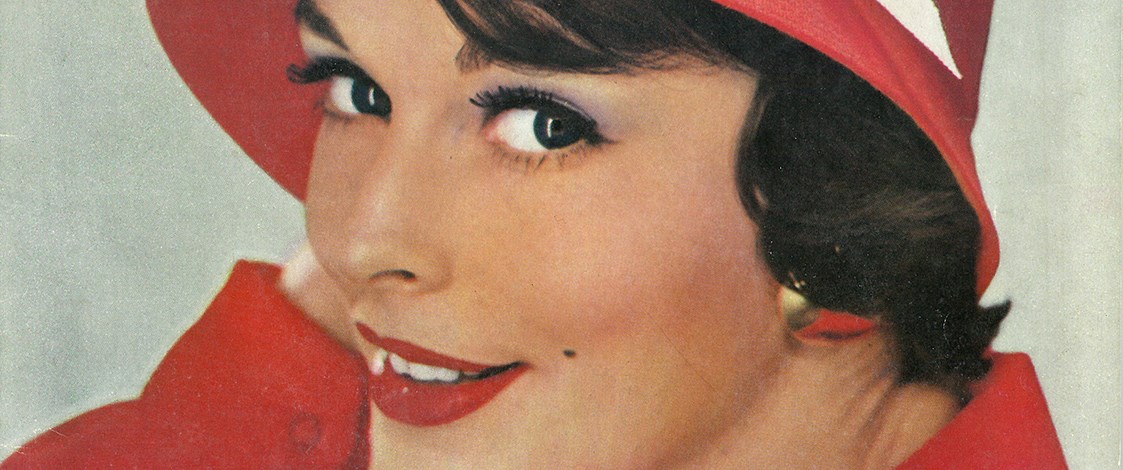
Although she enjoyed huge success as an all-round model from 1949 through to the 1970s, it is as a hat model that Fleur Young is particularly remembered. Fashion writers waxed lyrical about this 'milliner’s delight'.
"The slim, expressive-faced Fleur Young is one of those fortunate people who can wear any hat ever designed – and with distinction," wrote one. A 1959 Wanganui Herald headline went further: "Model-Cum-Housewife Fleur Young is Answer to Milliner’s Prayer," though which milliner had prayed for her is not explained in the ensuing article.
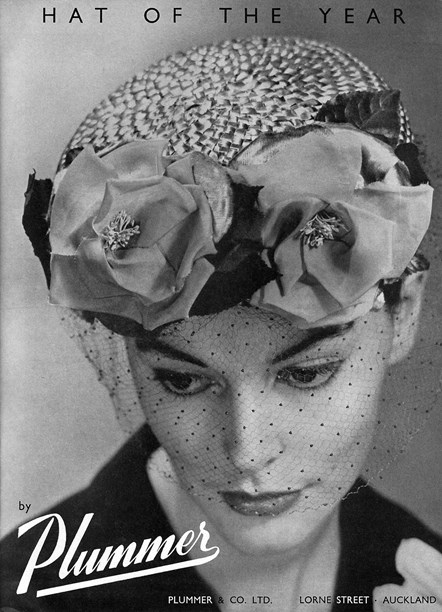
Fleur modelled the Hat of the Year for Plummer in 1958.
The young Fleur Baeyertz certainly made an impression on celebrated London hat maker Aage Thaarup, who visited New Zealand during the 1950s and 1960s. The Danish-born milliner’s client list included the Duchess of Windsor (Wallis Simpson), the Queen Mother and the then young Queen Elizabeth II. He became known as 'the Queen’s milliner'. In New Zealand, Plummer Hats in Auckland held the licence to reproduce his ready-to-wear designs. Fleur appeared in his first Auckland show and an impressed Aage asked her parents if she could come to London to work as a model for him. At the time her family felt she was too young but the two kept in contact for many years. Fleur modelled for Aage on his promotional visits on both sides of the Tasman. Among her souvenirs is a card bearing his fashionable Chelsea address. "Do you remember the red rose I gave you for each performance? What fun we had!" he had written.
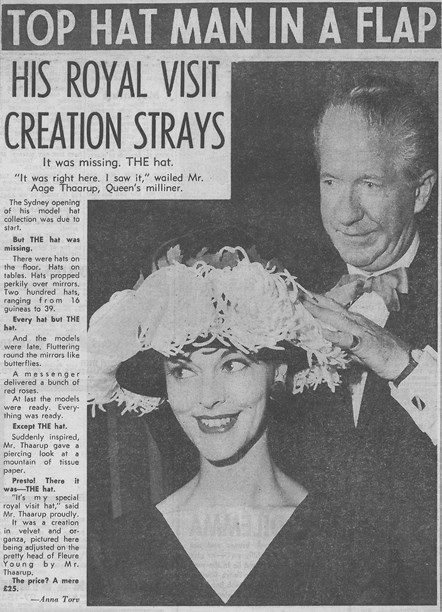
Fleur modelled for the Queen's milliner, Aage Thaarup, in New Zealand and in Australia.
Fleur never had a modelling lesson in her life. Her career began thanks to the illness of a model booked for one of Milne & Choyce’s catwalk shows. "You’ll have to do it Fleur," she was told. At that time the pretty teenager had just left school and was a milliner’s apprentice– one of about 15 girls who worked at a long table on the Auckland store’s fourth floor.
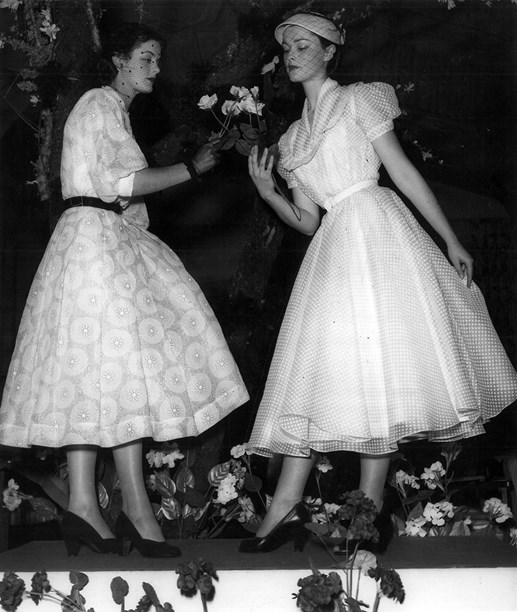
Fleur (right) was a teenager when she started modelling in Milne & Choyce fashion parades. She is wearing a pale pink and white spotted Swiss organdie with a white ‘bib’ frill and puff sleeves. Image © Auckland Star / Stuff.
Stepping into the shoes of the absentee girl launched Fleur as one of the most sought after and hard-working models of her generation. A portrait of her taken by photographer Clifton Firth was blown up and displayed in Milne & Choyce’s front window.
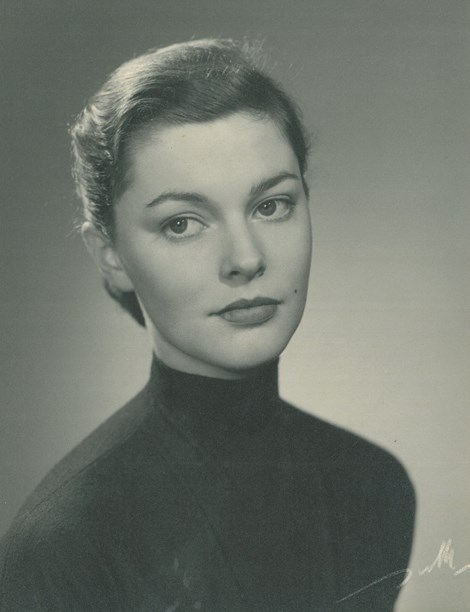
A portrait of Fleur by Clifton Firth, 1953. Image courtesy of Fleur Young.
"You had two ways of entering Milne’s and when that photo went up I went to work through the other entrance," Fleur recalls with a smile. Despite the acclaim she would later receive in the modelling worlds of New Zealand and Australia, Fleur always maintained that models should never lose their sense of proportion. "Their job is to sell the clothes, not themselves," she told the New Zealand Herald in a 1960 article.
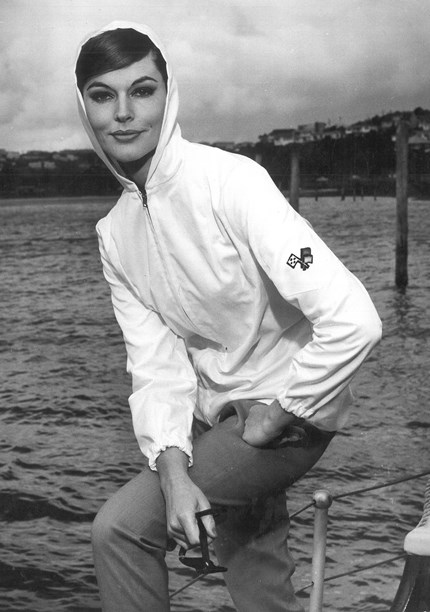
Fleur modelling sportswear.
It was a busy time, especially in the fashion seasons. Fleur was in great demand for house modelling and store parades, not only in Auckland but throughout New Zealand. She was one of the winners of the Auckland Star modelling contest in association with Milne & Choyce for the Italian Fashion parades of the prestigious Pitti Palace collection, a memorable fashion event in 1955.
Fashion parades in those times were happy, Fleur recalls. There were no sour faces. She expresses her dislike of the looks of cultivated boredom on the faces of many contemporary models. "You smiled. It was important to smile because you were communicating with people, letting them know you enjoyed wearing these clothes or hats."
Photographic modelling particularly suited Fleur and she came to prefer it to parade work. A photographer with whom she worked on many occasions in the 1950s and 1960s was Dutch immigrant, Ted Mahieu. She remembers him with great affection and admiration. The two formed a sort of dream team and, again a long friendship. Among Fleur’s personal collection of photographs are a great many of Ted’s fashion shots of her.
Photographs of Fleur by Ted Mahieu.
She maintains that her knack for hat modelling was helped greatly by her knowledge of how hats were made. Millinery had fascinated her from an early age. She remembers making a model hat on her first day at work at Milne’s. Later she was able to combine modelling 'down time' with a return to millinery.
"I always wanted something I could do at home if I had a family. Modelling, particularly hat modelling, fitted the bill," she says. "In fact hat modelling turned out to be quite compatible with pregnancy!"
And that’s the way it happened. In 1960, she and her husband, broadcaster Peter Young, set off to Sydney with four-year-old Laurie, the first of their two daughters. Fleur’s success as a model continued on the other side of the Tasman with parades and photo shoots for many of the big stores, a wide range of advertising photographic modelling assignments (some including daughter Laurie) and cover shots on leading Australian women’s magazines.
Fleur appeared on the cover of several Australian fashion magazines in the early 1960s.
Chosen to represent New Zealand in a feature on international models in Australia (Flair magazine, January, 1963) Fleur is described as having: "the truly international look of top models anywhere, and has learned to make the most of her fine cheek-bones and slender long throat (she’s the milliner’s delight!)".

Fleur was photographed for the Australian magazine, Flair, in 1963.
In late 1964, separated from her husband, Fleur returned to Auckland with her two daughters. She decided to set up her own millinery salon and found premises in Glendowie. To celebrate the opening, Fleur staged a millinery parade in a local hall showing around 50 of her hat creations and a small selection (along with a cable of best wishes) from Aage Thaarup.
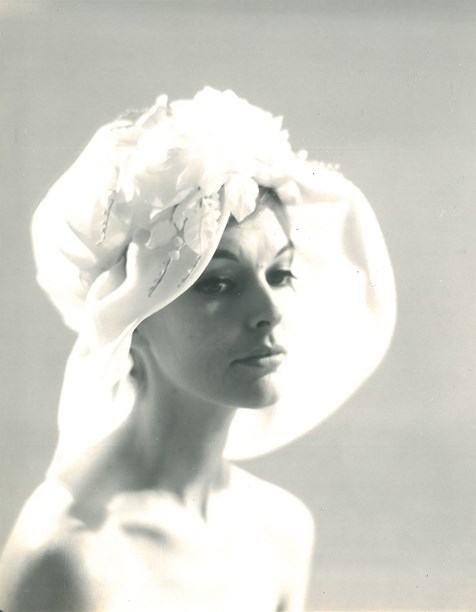
Fleur modelling one of her own designs. Image © Fleur Young.
"Assisted by Dawn Scott and Petah Chatfield, she presented a collection of 'special occasion' models, ranging from minute Dior cocktail caps to organza creations of sunshade proportions with a fair sprinkling of variations on the classic Breton, boater, pillbox and cloche." (Undated magazine article)
Although the more casual fashions of the early 1960s and the emergence of 'big hair', threatened the future of the millinery business, Fleur expressed her hopes for enthusing the younger generation to New Zealand Woman’s Weekly writer, Sandra Potter (7 December, 1964). "I think it is terribly important for a teenager to know which hats suit them and to learn hat sense," said Fleur.

Fleur in the millinery salon she set up in Glendowie, Auckland in the mid 1960s.
Five years later in a news feature (unsourced) Fleur is featured as both model and interview subject. 'Does a girl need a hat to get ahead?' runs the headline. The answer is affirmative; indeed millinery is reported as being a flourishing business. "I believe hats can do wonders for any woman. The face is the first thing a person notices when being introduced to another. If the face is outlined and complemented by a hat, it makes a very pleasant first impression," Fleur is quoted as saying.
"Hats finish an outfit," she continues. "Wisely chosen, they can bring out the good points in a face, disguise the bad ones, play up the eyes and, of course, cover a messy hairdo. I feel a hat is one of the most important accessories in a woman’s wardrobe."
Despite these sentiments, an award of a Golden Hat Pin by the Professional Mannequins’ Association for millinery design in 1969, and fashion articles into the early 1970s claiming 'hats are back', in reality the 1970s saw the demise of hats as an essential part of a fashionable woman’s wardrobe.
According to Fleur it was the pope who ruined everything! Catholic women, not generally known for trend-setting, were certainly abandoning once-compulsory church headwear by this time, but they were probably only one factor in the hat’s decline. She closed her salon and in 1975 went into the gemstone business with her life partner, David Brereton.
Surprisingly for one whose earlier life was so associated with the love of hats, Fleur has no millinery keepsakes. "These days I just wear a cap," she laughs.
Text by Katherine Findlay. Banner image of Fleur Young on the cover of The Mirror, March 1960. Photo by Ted Mahieu, © Ted Mahieu.
Published August 2019.